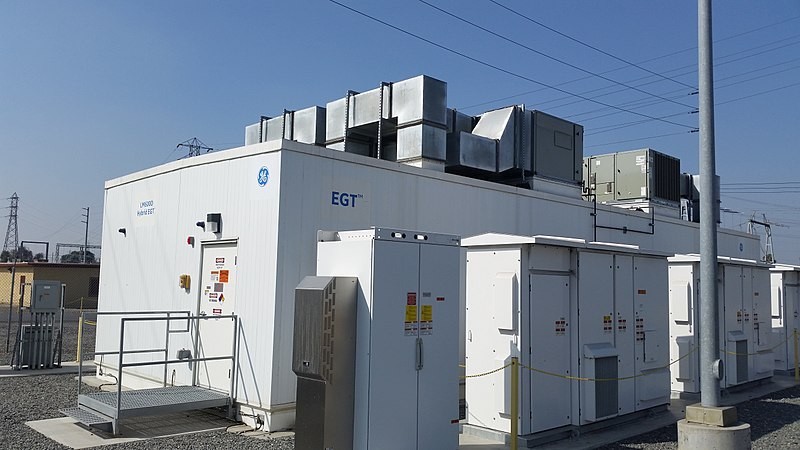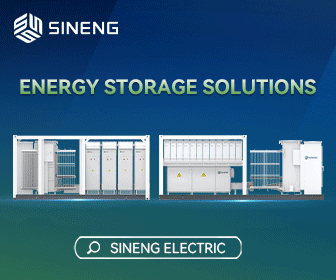How Close Are We to Plug-and-Play Energy Storage?
Plug-and-play technology is a natural part of our daily lives. We buy all of our devices with the expectation that they will work right out of the box, without having to jump through hoops, install drivers, or fight with software to make it function. Clean energy is also becoming the norm in our daily lives, quickly growing into a necessity as consumers and business leaders try to cope with the looming threat of climate change. Unfortunately, it is anything but plug-and-play.
Clean energy and storage technology will need to advance further before it can be considered plug-and-play, but how far away are we from reaching this technological milestone?
Growth of Home Battery Backups
 Green energy is better for the environment, but we can't take advantage of it if the sun doesn't shine or the wind doesn't blow. Regardless of which system we employ - solar, wind, or hydro - we still end up stuck with reconnecting to the local grid, relying on gasoline or diesel generators, or installing a battery backup. In 2017 and 2018, consumers bought backup battery systems faster than factories could build them; the industry grew by 24 percent in the first quarter of 2017, nearly doubling the number of systems installed the year before. (image: World's First Low Emission Hybrid Battery Storage: Ysc usc CC BY 4.0 via Wikimedia Commons)
Green energy is better for the environment, but we can't take advantage of it if the sun doesn't shine or the wind doesn't blow. Regardless of which system we employ - solar, wind, or hydro - we still end up stuck with reconnecting to the local grid, relying on gasoline or diesel generators, or installing a battery backup. In 2017 and 2018, consumers bought backup battery systems faster than factories could build them; the industry grew by 24 percent in the first quarter of 2017, nearly doubling the number of systems installed the year before. (image: World's First Low Emission Hybrid Battery Storage: Ysc usc CC BY 4.0 via Wikimedia Commons)
Lithium-ion batteries are making an appearance in nearly every new commercial technology, from smartphones to electric cars. Not only do they provide a reliable foundation for these battery backup systems., but they have been getting more affordable every year. And, while the cost of manufacturing lithium-ion batteries used for these backup systems has been dropping steadily for the last two decades, obtaining the necessary lithium can be a politically charged and environmentally precarious process due to its scarcity and increased adoption by a number of technologies. Most of the world's lithium supply comes from China, Australia, Chile, Bolivia and Argentina, with Western Australia being the largest global producer as of 2019. These batteries contain more than lithium, however. This coveted element makes up less than 1 percent of the battery's makeup, but a shortage could make battery backups more expensive and harder to obtain.
Why Is Plug and Play Important?
Right now, getting a battery wall or other energy storage system installed in the home requires bringing in professional installers. Some of the more well-known commercial battery backup systems can cost upwards of $6,000 before installation costs are factored in. This leads many consumers to bypass the battery backup in favor of installing solar or other renewable energy systems. While taking this route may reduce their utility bills, it won't necessarily provide them with energy they need when they need it.
Plug-and-play makes energy storage more affordable for the average consumer. Before installing a renewable energy system, homeowners should go over their energy bills for the last year to determine how big of a system they'll need. That will help them figure out how much power storage will be necessary to keep the household running.
Plug-and-play energy storage systems are designed to make the process simpler. Instead of bringing in a professional installation team, consumers can purchase their batteries, have them delivered to their home, and install them immediately.
How Far Are We?
The availability of plug-and-play home energy storage technology will depend on several variables, including the supply and affordability of lithium-ion batteries. The plug-and-play global market is expected to be worth more than $105 billion by 2025. Home energy storage technology is competing with the electric car industry for these batteries, which could make it difficult for companies to develop true plug-and-play energy tech.
In 2016, industry experts estimated we'd reach plug-and-play tech by the early 2020s. This is contingent on whether or not we are able to switch to more sustainable energy sources and technology that lowered the cost of energy storage to less than $70 per megawatt-hour for a minimum of six hours. As recently as 2018, however, energy storage can cost upward of $3,000 per kilowatt-hour. The industry has a long way to go. (image: Power-energy for energy storage systems: Materialscientist at English Wikipedia CC BY-SA 3.0 via Wikimedia Commons)
The early 2020s is an optimistic projection, but one the industry will probably fail to reach. Renewable energy and battery technology aren't quite there yet. Based on current technology levels and forecasts, we will likely see plug-and-play energy storage in the early 2030s, assuming the industry continues in the same direction.
The Future of Clean Energy
Sustainable and renewable options are the future of the world's energy production - there is no doubt about that. Energy storage will need to become more affordable and easier to install before consumers start adopting this technology. Given the current cost of energy storage per kilowatt-hour, it will likely be a decade or more before plug-and-play energy storage becomes mainstream.
Megan Nichols is the editor of Schooled By Science, an easy to understand science and environmental blog.
Twitter | @nicholsrmegan
Author: Megan Nichols









